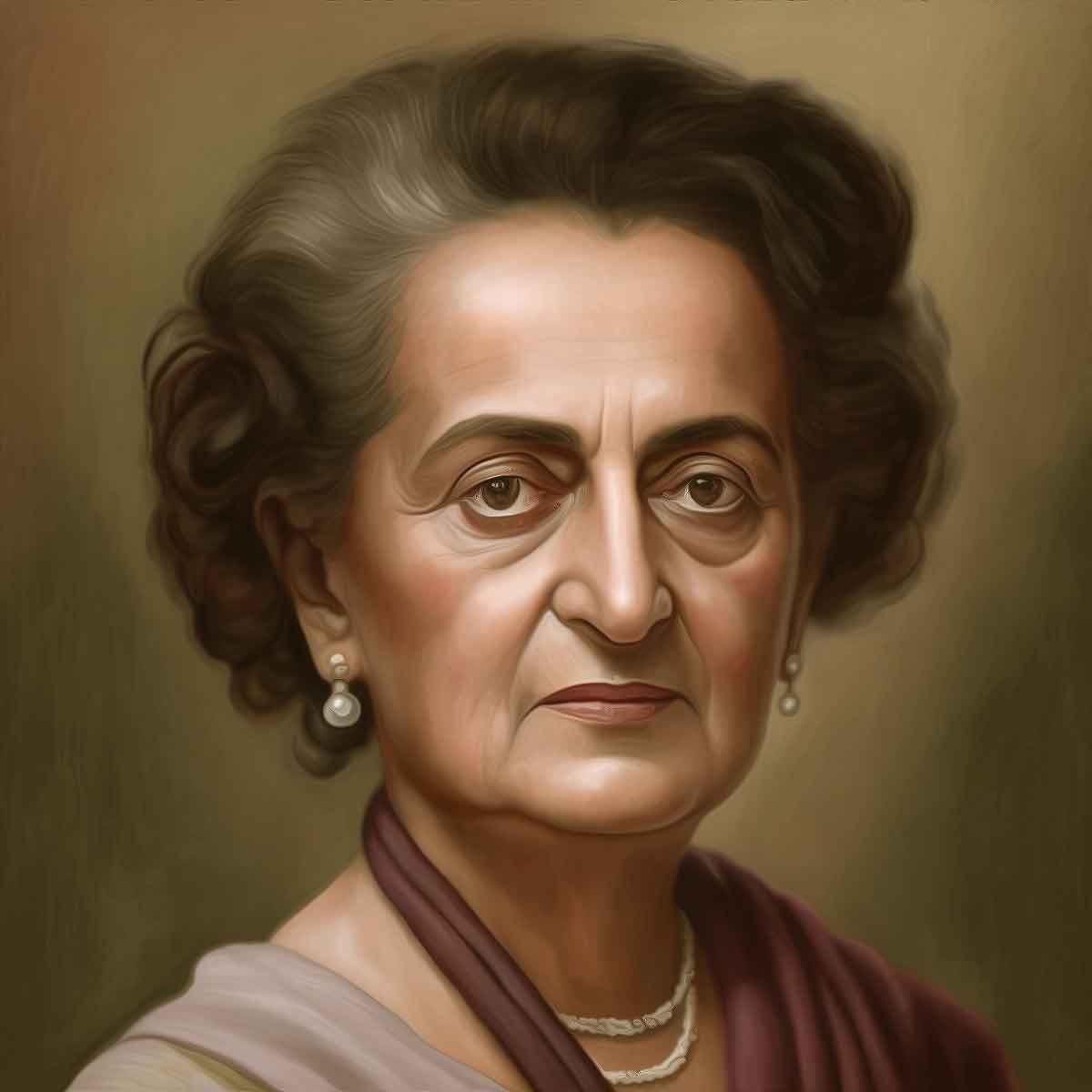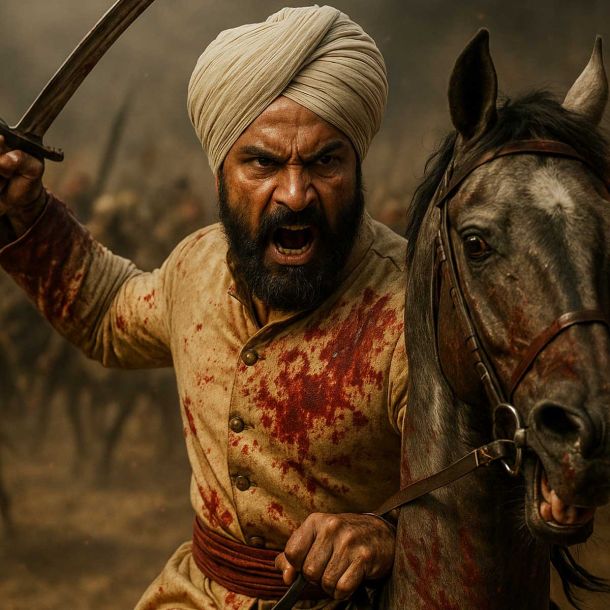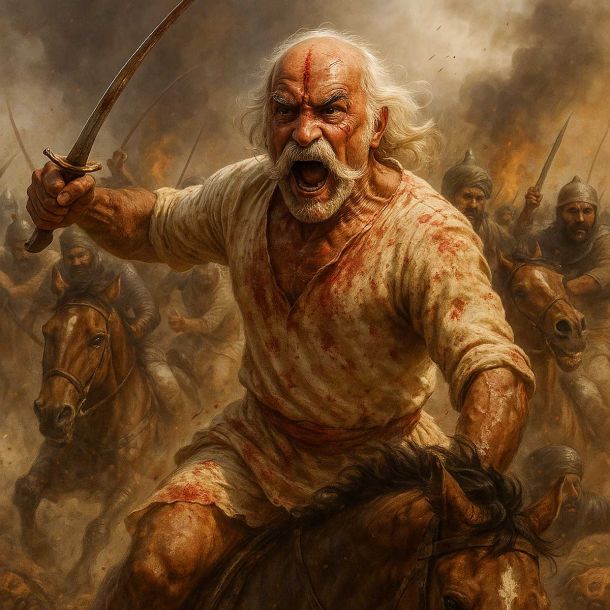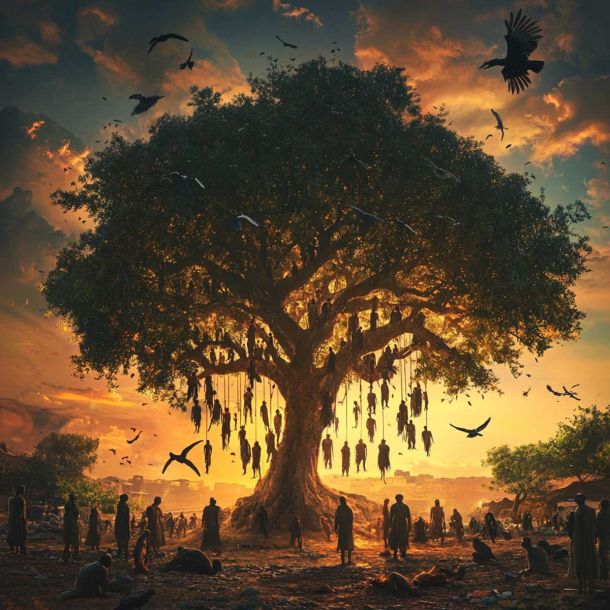Sanatan Articles
Satyaagrah
Written on
Satyaagrah
Written on
Satyaagrah
Written on
Satyaagrah
Written on
Satyaagrah
Written on
JOIN SATYAAGRAH SOCIAL MEDIA
"What men value in this world is not rights but privileges": Privy Purses - The Forgotten Part of Indian Integration that started with Indian constitution’s guarantee to the rulers in return for their Integration into union and ended with its termination

The process of independence was not a simple one for India in many matters. The problems ahead were manifolds, ranging from the future political setup, Economic system, the vast migration, the national integration. In the context of the prevailing circumstances of that time, the integration of the region into one country was undoubtedly the most complex. India at the time was a region composed of more than 550 sovereign princely states.
These states were diverse in many ways and integrating them into one political unit was a daunting challenge. The strategic action of Valabhai Patel and VK Menon in such regards is surely commendable and examining it would be an insightful lesson in politics. This task was accomplished with many different plans of action. An important aspect of this accomplishment was ‘privy purses’.
India's rich history is intertwined with a complex tapestry of political, social, and economic reforms. Among these, the system of privy purses played a significant role in shaping the nation during its early years post-independence. The concept of privy purses was introduced as a means to integrate the princely states of India into the newly formed Republic. This article delves into the origins, evolution, controversies, and eventual abolition of privy purses, shedding light on a forgotten aspect of Indian integration.
Privy Purses in India: The Forgotten Part of Indian Integration
The privy purses happen to be a very interesting part of modern Indian history. It started with the Indian constitution’s guarantees to the rulers in return for their cooperation in Integrating their states into the union and ended with its termination in the form of a constitutional amendment.
In India, a privy purse was a payment made to the ruling families of erstwhile princely states as part of their agreements to first integrate with India in 1947 after the independence of India, and later to merge their states in 1949, thereby ending their ruling rights.
The privy purses continued to be paid to the royal families until the 26th Amendment in 1971, by which all their privileges and allowances from the central government ceased to exist, which was implemented after a two-year legal battle.
In some individual cases, privy purses were continued for life for individuals who had held ruling powers before 1947; for instance, HH Maharani Sethu Lakshmi Bayi's allowance was reinstated after a prolonged legal battle and lasted until she died in 1985.
History
When the British Crown partitioned British India and granted independence to the new Dominions of India and Pakistan, more than a third of the subcontinent was still covered by princely states, with rulers whose position and status within the Indian Empire had varied. In 1947, there were more than 560 such princely states in India, over which the British Crown had suzerainty, but not sovereignty.
In 1947, princely states, numbering 555, covered 48% area of pre-independent India and constituted 28% of its population. Relations with them were determined by subsidiary alliances and other treaties, establishing the indirect rule. A protocollary system of gun salutes also determined the ranking of about 120 major states (Pakistan included), most, however, were minor/petty 'non-salute states'.
By the Indian Independence Act of 1947, the Crown abandoned its suzerainty, leaving the rulers of the states free to choose to accede either to India or to Pakistan or to remain fully independent. Most had been so dependent on the Government of India that they had little choice but accession.
By the eve of independence, most of the princely states had signed instruments of accession to India, and only one to Pakistan. Only a few states held out for complete independence after the British left India. Due to the diplomacy of Vallabhbhai Patel and V. P. Menon, Travancore, Bhopal, and Jodhpur signed the instruments of accession before 15 August 1947. Even after independence, three states vacillated, namely Jammu and Kashmir, Junagadh, and Hyderabad, which were integrated later.
The instruments of accession needed the states to only cede defence, communications, and foreign relations to India. Democratic institutions were introduced in these states, and it was only in 1949 that they were fully merged with India to form new states. Thus, Travancore, and Cochin merged into India and formed the new state of Thiru-Kochi.
Although the royal families had been allowed to retain large sums of money as their privy purse in 1947; in 1949, with the states and its revenues being entirely taken over by the Government of India, it was the Indian Government that provided the rulers and their families with privy purses that were determined by several factors such as the state's revenue, whether the state had been ranked as a salute state under the British Raj or not, antiquity of the dynasty, and so on.
Dewan Jarmani Dass of Kapurthala says:
Thus the rulers surrendered their sovereignty and as a quid pro quo they were granted handsome Privy Purses and other privileges.
As defined in 1949 under Article 291 of the Indian Constitution, a privy purse would be a fixed, tax-free sum guaranteed to the former princely rulers and their successors. The sum was intended to cover all expenses of the former ruling families, including those incurred for religious and other ceremonies, and would be charged on the Consolidated Fund of India.
With India remaining a member of the sterling area post-independence, and with the Indian rupee remaining pegged to the British pound sterling, the privy-purse payments constituted a significant outlay of government funds.
Recipients and amounts
The privy purses were determined by several factors. Minor feudatories of the erstwhile princely states received whatever little allowances the princely governments had been providing them. For the 565 princely states, privy purses ranged from ₹5,000 per annum to amounts in millions.
About 102 privy purses were of more than ₹1 lakh with an upper ceiling of ₹2 lakhs for all except 11 states. Only six of the most important princely states in India were provided with privy purses above ₹10 lakhs (worth 8,898 oz of gold): Hyderabad, Mysore, Travancore, Baroda, Jaipur, and Patiala.
For certain other states, while certain amounts were guaranteed for the time being, it was liable to be reduced soon after due to the deflation crisis in the 1960s. Thus, Hyderabad, which received initially a privy purse of ₹42,85,714, was a few years later, guaranteed ₹20,00,000 purse. The Government of India also, generally, reduced the allowances with every succession in the family.
Abolition
A motion to abolish the privy purses, and the official recognition of the titles, was originally brought before the Parliament in 1970 and passed in the Lok Sabha, but failed by one vote to reach the required two-thirds majority in the Rajya Sabha, with 149 voting for and 75 against.
On 6 September 1970, the President of India passed a laconic order in respect of each of the rulers of former Indian states. In the exercise of the power vested in him under Article 366(22) of the constitution, the President directed that with effect from the date of his order, all rulers ceased to be recognized as rulers. That resulted in the immediate termination of the privy purses received by the rulers, and the discontinuance of their personal privileges. Writ petitions under Article 32 of the constitution were filed by some of the rulers as test cases to question the orders. The Supreme Court ruled in favor of the rulers.
It was again proposed before Parliament in 1971 and was successfully passed as the 26th Amendment to the Constitution of India in 1971. The then Prime Minister Indira Gandhi argued for the abolition based on equal rights for all citizens and the need to reduce the government's revenue deficit.
The amendment effectively derecognized the existing titles:
the Prince, Chief or other person who, at any time before the commencement of the Constitution (Twenty-sixth Amendment) Act, 1971, was recognised by the President as the Ruler of an Indian State or any person who, at any time before such commencement, was recognised by the President as the successor of such Ruler shall, on and from such commencement, cease to be recognised as such Ruler or the successor of such Ruler.
Relevance of ‘privy purse’
- The payments of the ‘privy purse’ were made to the former rulers under constitutional provisions of Art. 291 and Art. 362. However, it was often questioned as a relic of the colonial past.
- The privy purse conferred ‘special status’ to the ruling class, which continued the British practice of ruler and ruled.
- It went against the idea of equality enshrined in the Preamble and Part 3 of the Constitution.
- Moreover, the ‘privy purse’ was an added economic pressure on a newly born independent nation, that was ridden with poverty, hunger, and security challenges.
Therefore, the then Prime Minister, Indira Gandhi, argued the case for the abolition of the privy purse. So, by the 26th Amendment to the Constitution of India in 1971, the ‘privy purse’ was abolished. The amendment led to the omission of Articles 291 and 362.
Reasons for the abolition of the ‘privy purse’
- The abolition of the privy purse was needed because it went against the idea of equal rights for all citizens, as enshrined under the fundamental rights of the Indian constitution.
- The concept of rulership, with ‘privy purse’ and special privileges was incompatible with principles of democracy, equality, and social justice and it was unrelated to any current functions and social purposes.
- In order to fulfill the aspiration of a socialistic pattern of society and burgeoning economic pressure, due to the 1971 refugee crisis from East Pakistan, there was a need for the Government to reduce the revenue deficit.
Though the abolition of the privy purse was alleged as constitutional fraud by the rulers of princely states
Aftermath
The end of the privy purse finally ended all the entitlements and special status of former rulers, thus turning them into ordinary citizens equal to other Indians, with no official recognition of their former ruling titles, special status, etc.
Many of the former royalty tried to protest against the abolition of the privy purses, primarily through campaigns to contest seats in the Lok Sabha elections of 1971. This included Mansoor Ali Khan Pataudi, the last and former Nawab of Pataudi, who contested from Gurgaon. Mansoor contested as a candidate for the Vishal Haryana Party but received barely 5% of the vote in a two-way contest. Vijaya Raje Scindia and her son, Madhav Rao Scindia, however, won in the 1971 Lok Sabha polls.
References:
- "Twenty Sixth Amendment". Indiacode.nic.in. 28 December 1971. Retrieved 19 November 2011.
- ^ Datar, Arvind P. (19 November 2013). "Who betrayed Sardar Patel?". The Hindu.
- ^ Ishtiaq Ahmed (1998). State, Nation and Ethnicity in Contemporary South Asia. London & New York. p. 99.
- ^ Jarmani Dass. Maharaja.
- ^ "Privy Purses to Rulers - Reduction Effected in Certain Cases" (PDF). Press Information Bureau, Government of India - Archive.
- ^ "Maharaja" by Jarmani Dass, page 424-435
- ^ "H. H. Maharajadhiraja Madhav Rao vs Union of India on 15 December 1970". Indian Kanoon. p. See para 44. Retrieved 16 October 2012.
The Bill was voted upon in the Lok Sabha on September 2, 1970. 332 votes for and 154 votes against it, were cast. It was considered in the Rajya Sabha, on September 5, 1970, and was defeated, 149 voting for and 75 against it. It failed in the Rajya Sabha to reach the requisite majority of not less than two-thirds of the members present and voting.
- ^ "H. H. Maharajadhiraja Madhav Rao ... vs Union of India on 15 December 1970". indiankanoon.org. Retrieved 4 March 2019.
- ^ "The Constitution of India (26th Amendment) Act 1971". The Gazette of India. 29 December 1971.
- ^ "Cricketers in Politics". Archived from the original on 9 June 2009. Retrieved 23 March 2009.
 Support Us
Support Us
Satyagraha was born from the heart of our land, with an undying aim to unveil the true essence of Bharat. It seeks to illuminate the hidden tales of our valiant freedom fighters and the rich chronicles that haven't yet sung their complete melody in the mainstream.
While platforms like NDTV and 'The Wire' effortlessly garner funds under the banner of safeguarding democracy, we at Satyagraha walk a different path. Our strength and resonance come from you. In this journey to weave a stronger Bharat, every little contribution amplifies our voice. Let's come together, contribute as you can, and champion the true spirit of our nation.
 |  |  |
| ICICI Bank of Satyaagrah | Razorpay Bank of Satyaagrah | PayPal Bank of Satyaagrah - For International Payments |
If all above doesn't work, then try the LINK below:
Please share the article on other platforms
DISCLAIMER: The author is solely responsible for the views expressed in this article. The author carries the responsibility for citing and/or licensing of images utilized within the text. The website also frequently uses non-commercial images for representational purposes only in line with the article. We are not responsible for the authenticity of such images. If some images have a copyright issue, we request the person/entity to contact us at This email address is being protected from spambots. You need JavaScript enabled to view it. and we will take the necessary actions to resolve the issue.
Related Articles
- At school Part I - An Indian Pilgrim (Netaji's Life and writings)
- Kashi symbolizes the unshakeable plasticity and unity of Hindus - presence of Padmesvara stones and Padmesvara inscription in the Lal Darwaza mosque, attests further that Kashi’s Islamic monuments are built on temple remains
- Sarla Thakral, India's first woman pilot at just 21, defines Nari Shakti, rising in a saree amidst a male-dominated era, she transitioned as a visionary artist and designer, her legacy remains an emblem of resilience and women empowerment in India
- How Nehru had laid blue print of Indira Gandhi inheriting his PM post
- “A true soldier needs both military and spiritual training”: Note of ₹1 lakh came during the Azad Hind govt of Netaji where there was no picture of Mahatma Gandhi but the picture of Subhash Chandra Bose printed and issued by Azad Hind Bank
- “It is not the honor that you take with you, but the heritage you leave behind”: Greek historian Megasthenes' Indica provides a historical account of ancient India, offering glimpses into its geography, society, governance, religion, economy, and culture
- "All violence, all that is dreary and repels, is not power, but the absence of power": Punkah - the hand operated ceiling fans of Colonial India and a reminder of how British colonials exploited ‘punkah-walas’ in India’s summers extracting constant labor
- How Britishers were challenged by 83 year old Ropuiliani in Mizoram in 1892-’93
- China attacked India just three years after PM Nehru reduced the defence expenditure by Rs 25 crores: Union Budget 1959
- Dandibhatla Viswanatha Sastry was invited by Germany's Führer Adolf Hitler to decode Vedas & build War Missiles before World War II
- A troubled childhood - Rajguru: The Invincible Revolutionary
- ISRO mum on 684 staff dead: 197 suicides and 1,733 deaths at India's nuclear establishments in last 15 yrs
- Chipko Andolan: Cut me down before you cut them down
- Film based on Nathuram Godse ‘Why I killed Gandhi’ gets opposition from Congress party demanding to ban the movie in Maharashtra, Cine Workers Association seek nationwide ban
- Birsa Munda: The tribal folk hero who was God to his people by the age of 25





















